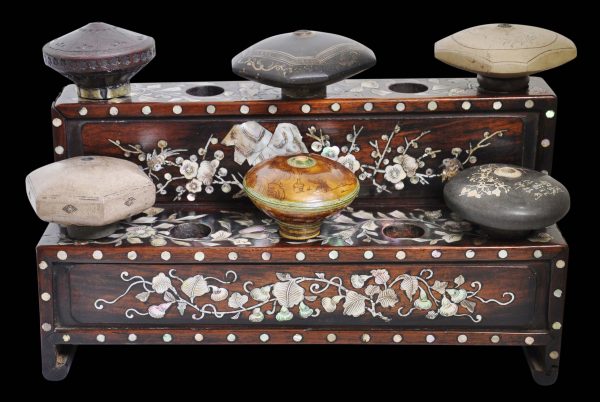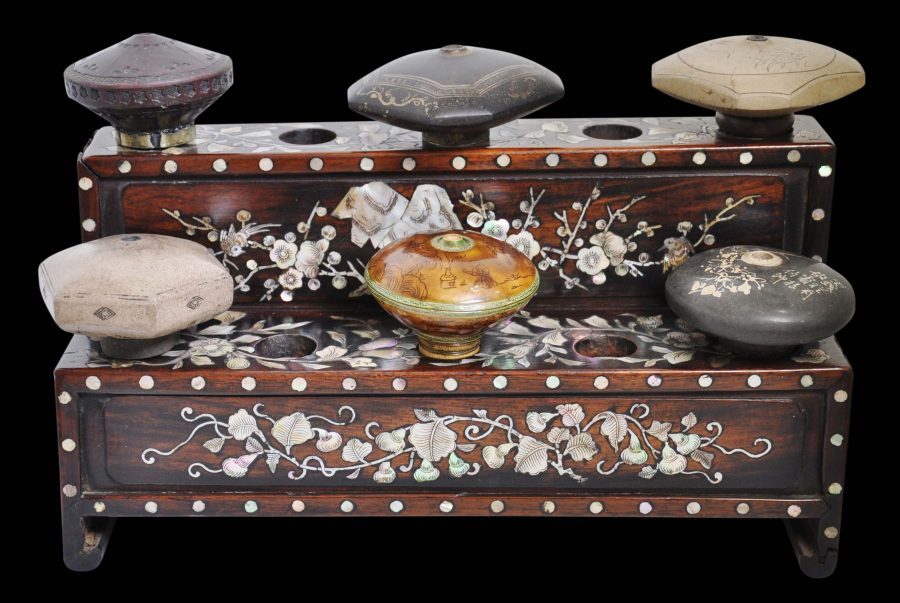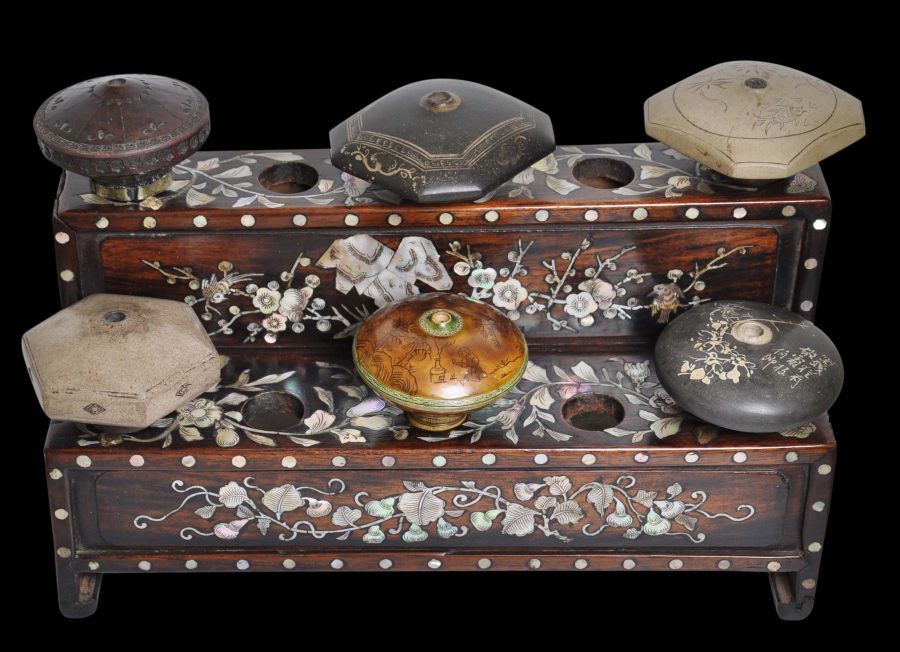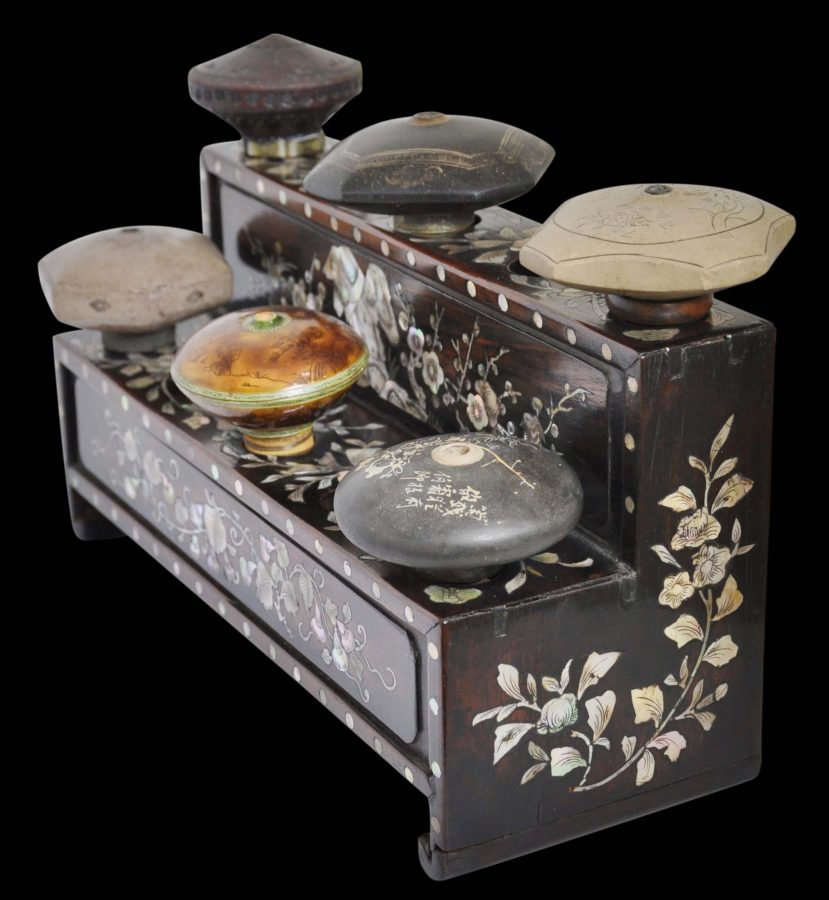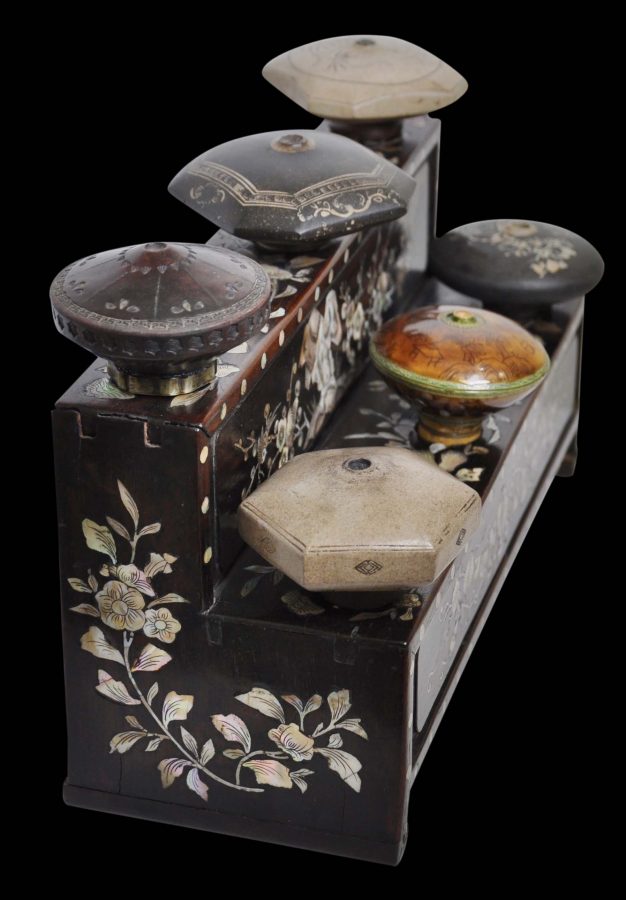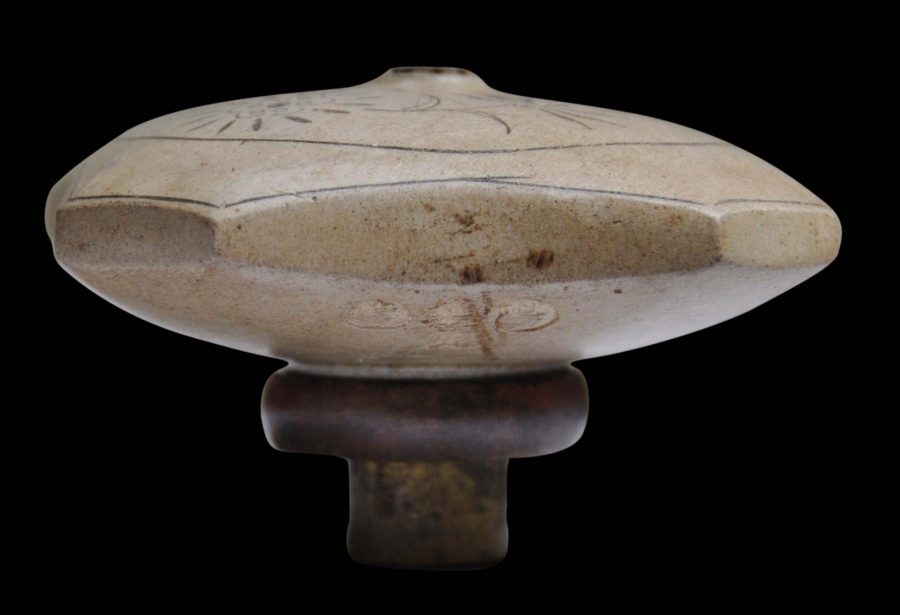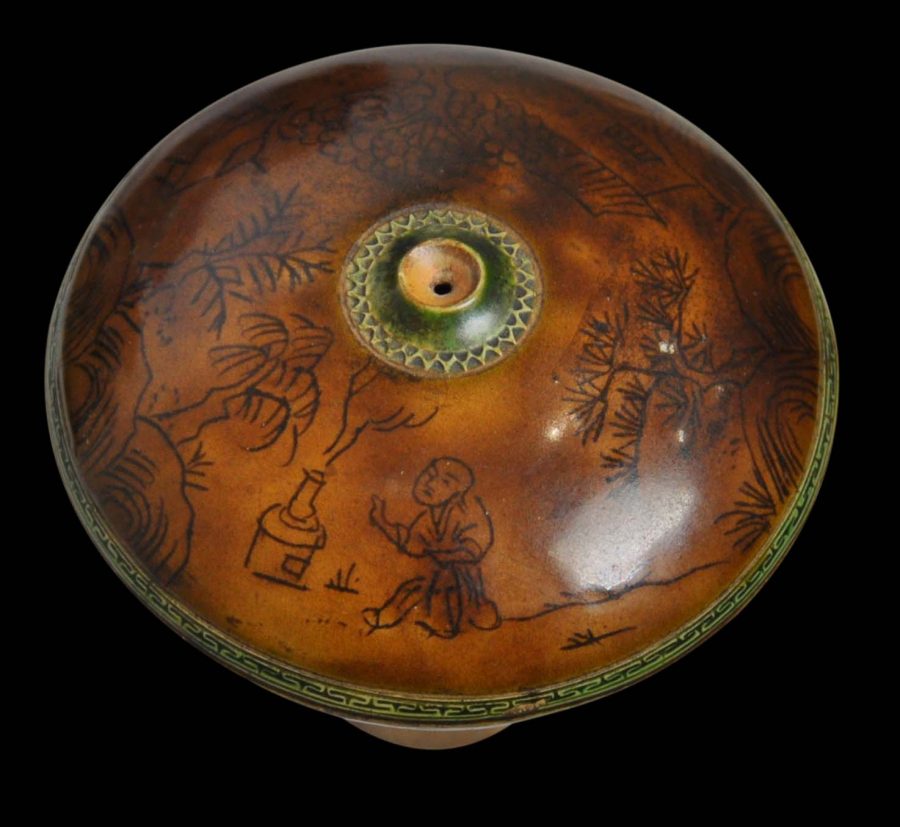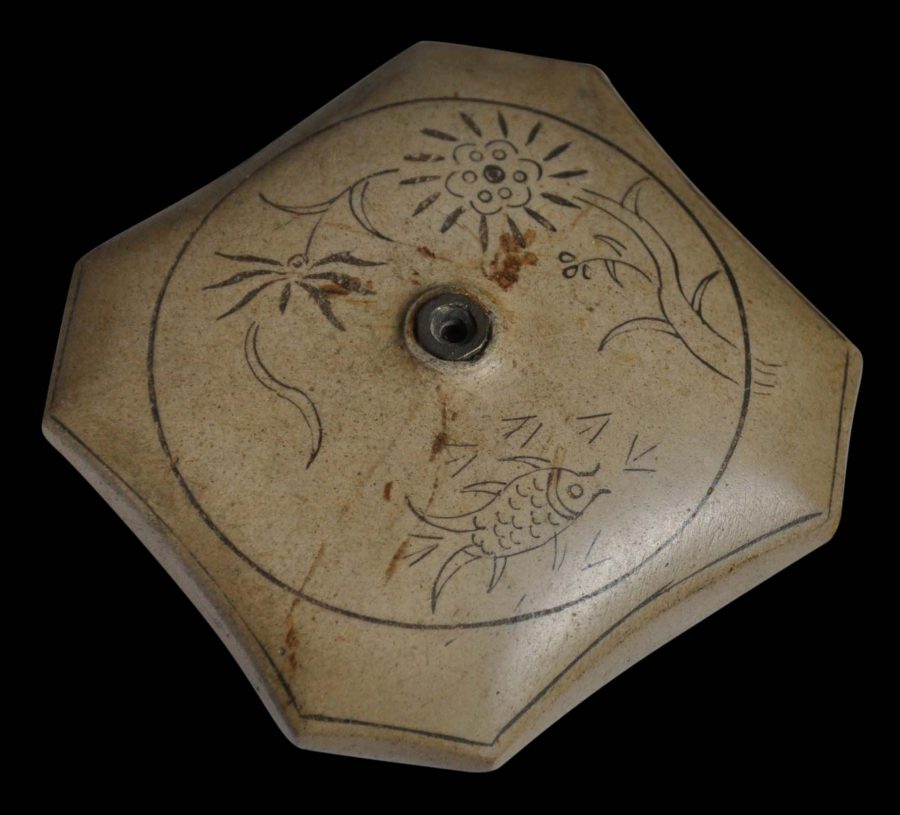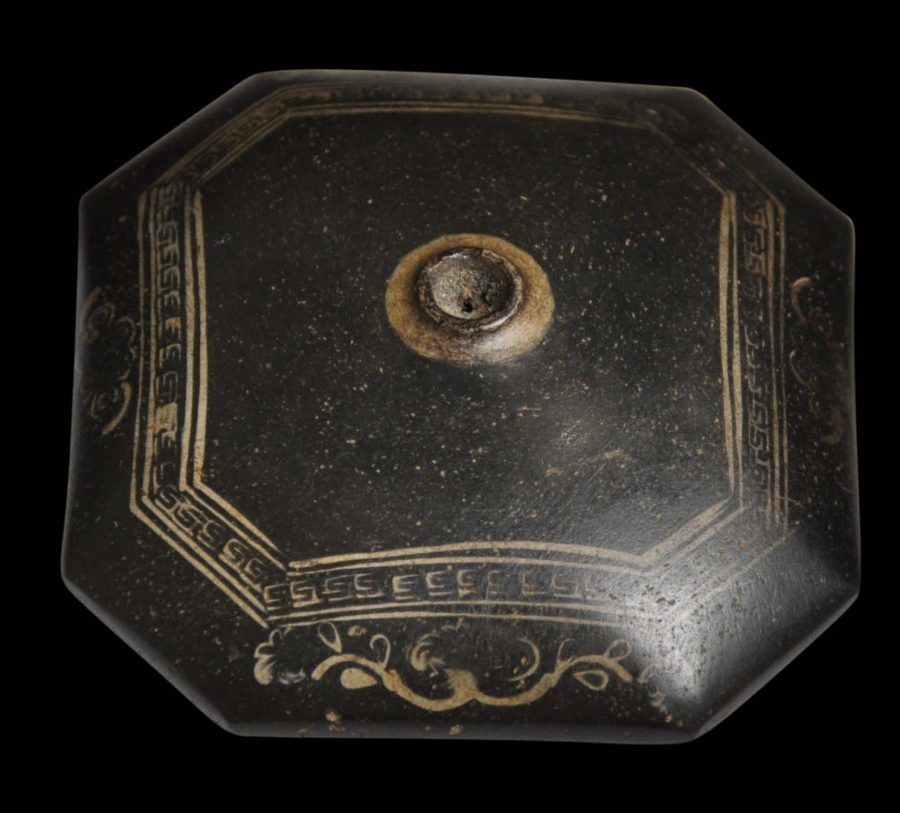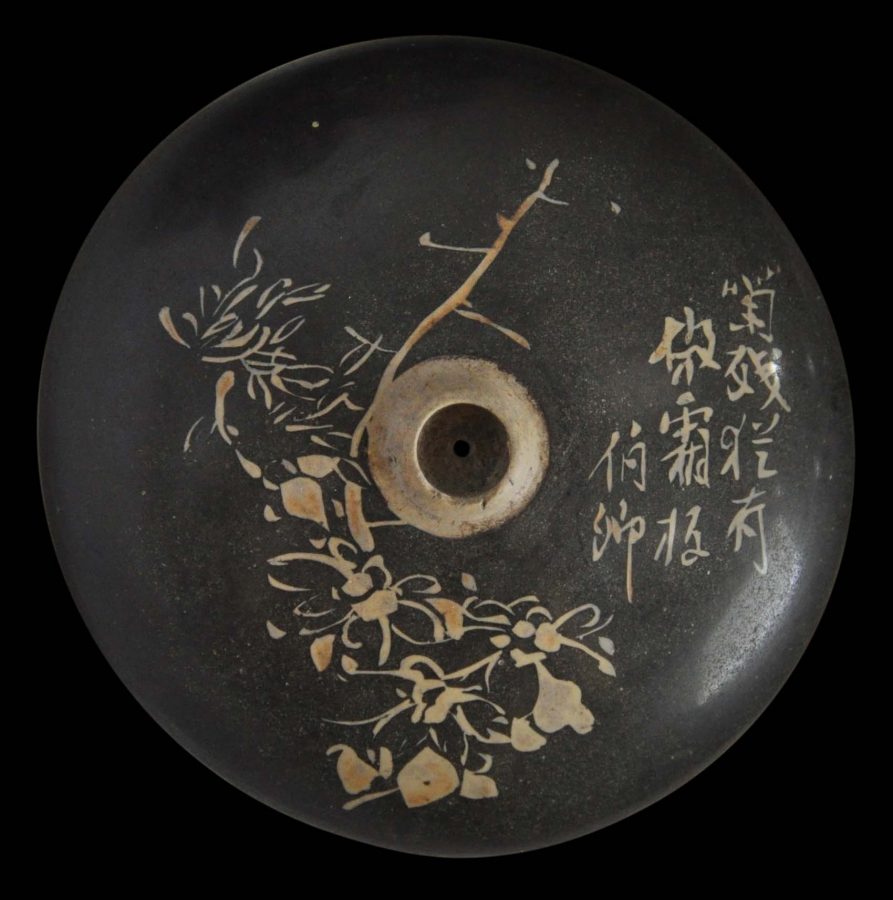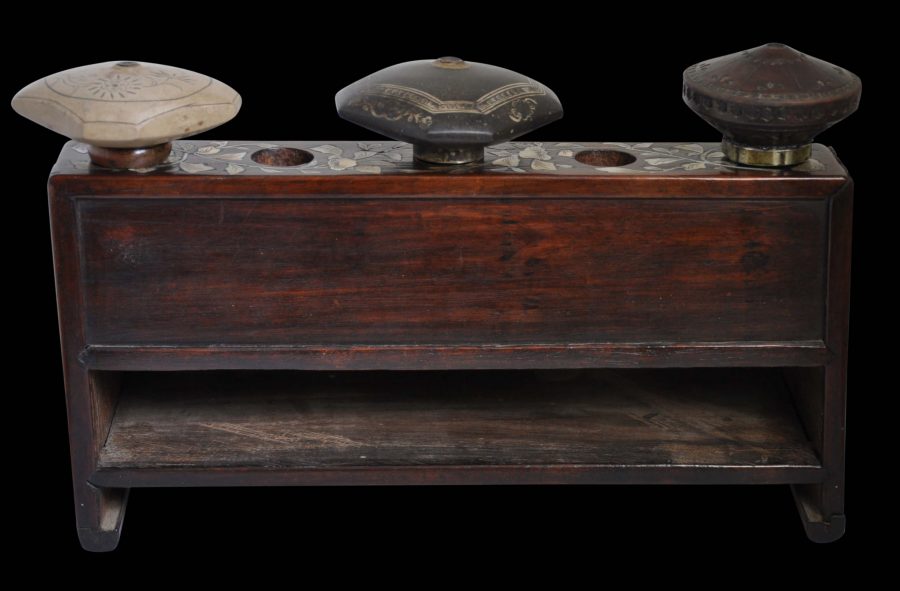Opium usage was associated among wealthier users with elegant accouterments. The pipe was accompanied by a detachable pipe head and a user might have multiple heads, each a miniature work of art. And with multiple heads came the need for presentation stands, such as the example here.
This one, of two tiers, and with space or sockets for ten pipe heads is made of rosewood inlaid with mother-of-pearl in designs suggestive of a vine fruiting with gourds, prunus blossoms, a scholar’s rock, and other floral motifs.
The back of the stand has a space for a dross tray, perhaps a metal pan, onto which the ash and residue inside the pipe heads could drip when not being used.
The stand is accompanied by six fine pipe heads, each of either stoneware or ceramic, and with a characteristic ‘door-knob’ shape with a tiny aperture to the top over which the opium ball was heated. Each is either glazed with motifs including fish, a pagoda, and flowers. One is decorated with a poem in Chinese script which talks of chrysanthemums and snow.
Each has a maker’s or retailer’s mark on its underside.
Most opium pipes and equipment available today are reproduction pieces – it is rare now for genuine examples to appear on the market. All the pipe heads here are in fine condition without chips to the head itself. One has some minor use-related damage to the metal collar that sits inside the pipe itself.
The stand has a fine patina and is without chips or repairs. One dovetail joint however has come adrift slightly with age-related wood shrinkage.
References
Bertholet, F.M., Opium: Art et Histoire d’un Rituel Perdu, Fonds Mercator, 2007.
Delalande, D. & E., Memoires d’Opiums/Memories of Opium, Somogy editions, 2011.
Lee, P., Opium Culture: The Art & Ritual of the Chinese Tradition, Park Street Press, 2006.
Martin, S., The Art of Opium Antiques, Silkworm Books, 2007.


